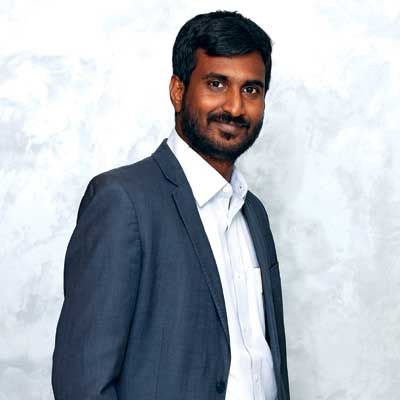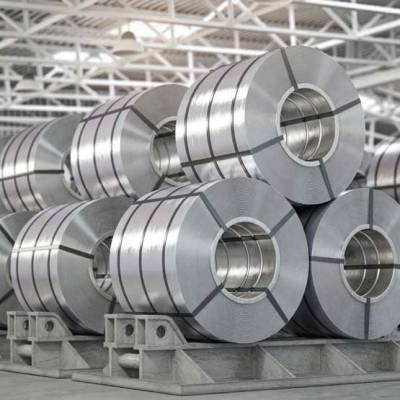- Home
- Real Estate
- Reimagining the Construction Continuum
Reimagining the Construction Continuum
- Construction Projects
- Budget
- Construction Process
- Digitalisation
- Cutting-edge Technologies Mobile Devices
- Building Information Modelling
- Bim
- Internet of Things
- Iot
- Internet
- Construction Industry
- Vr
- Ar
- Mixed Reality
- Mr
- Smartphone Apps
- Infrastructure Owners
- Architects
- Engineers
- Civil Contractors
- Stakeholder
- Constructible Bim
- Microsoft
- Hololens
- Sketchup Pro
- 3d
- Tekla Structures
- Tekla Model Sharing
- Trimble Connect
- 4d
- 5d Trimble
- Vico Office
- 6d Models
- Hvac
- Elevators
- Escalators
- Aec Companies
- L&t
- Chenab Bridge Challenge
- Chenab Bridge
- Jammu and Kashmir
- Baramulla-srinagar-udhamptur
- Konkan Railways Corporation
- Wsp Finland
- Trimble India
- Saarc Region
- Construction Software
- Trimble Buildings
Analysis of data shows that a whopping 90 per cent of all construction projects run late; 40 per cent of projects go over budget; and in every project, a minimum of 10 per cent of materials are wasted. Visualising the construction process as a continuum is a powerful mechanism for the industry to identify all opportunities to minimise waste and maximise efficiency, leading to profits and, of course, higher customer satisfaction as the project is completed in time and according to promised quality.The construction continuum for buildings—spread over the five key stages of planning, designing, engineering, construction, and finally occupancy and maintenance—is rapidly being transformed by technology. Driven by digitalisation, and the deployment of cutting-edge technologies and processes, the entire construction continuum will soon be characterised by pervasive use of connected systems of sensors, intelligent machines, mobile devices, and new software applications—all bound with the common thread of Building Information Modelling (BIM). Visualising the construction process as a continuum, or placing a building on the various stages of a continuum is also a powerful way for construction companies to analyse the business value of various technologies. Using the continuum as a reference, they can readily see the advantages digitalisation brings to construction or operations. Constructability is the most important and relevant need of the industry, and the arrival of new technologies and construction processes such as Constructible BIM, mixed reality, robotics, cloud computing and Internet of Things (IoT) is driving a massive change in how we design, operate and build structures. As disruptive technologies, they not only have the potential to create new benchmarks of value for all stakeholders in the construction ecosystem, but shape new competitive advantages in the new digital-savvy world. Disruptive technologiesLet’s take a closer look at some of these important technologies.IoT is all about sensors connected to the Internet and transmitting continuous data for better decision-making. In the construction industry, while this is commonly referred to as telematics, it means any object or machine component can have sensors installed to monitor operating conditions, performance levels and/or physical states of buildings. Virtual (VR), augmented (AR) and mixed reality (MR) mark the beginning of a new era of visually immersive technologies and are an important next step in digitisation of the construction industry. Theoretically, using MR to plan a project can enormously reduce costs while delivering other results that lead to better construction.Spanning the construction continuum, modern collaboration tools allow streamlined flow of information between different stakeholders and provide a single, centralised location for all construction-related documents, processes and communications that are accessible to everyone involved in the project. Thus, construction professionals have access to the same up-to-date information in the form of drawings, schedules, job information and reports; and can provide their own real-time input and updates as they work on the project. These tools are now so advanced that they can combine BIM with construction schedules and stream this rich information to smartphone apps, which in turn can measure stockpile amounts simply by pointing the phone at the pile and walking around it. A continuum defined by technologyConnecting people, machines and projects delivers real-time data to infrastructure owners, architects, engineers, civil contractors and each stakeholder for enhanced information about material, people and asset utilisation, resulting in improved productivity. At the planning and design stage, Constructible BIM provides a useful framework managing information from generic (2D or generic 3D), to specific (Specific 3D), to detailed (3D with detailed content). At the beginning of the design phase, engineers can start by using generic content, which is appropriate for structure design and can serve as space occupation. As more technical details become clear over the course of the project, the generic model can be elevated to a higher level: a specific 3D model. Further, mixed reality technologies like Microsoft’s HoloLens can be highly useful at this stage, as they can add computer-generated surfaces, graphics and objects into the real environment around a user. A designer can, for example, manipulate objects, use voice commands, and move inside the designed environment using mixed reality.Many architects, as well as general contractors and construction management firms, use SketchUp Pro, the easiest tool to draw in 3D, to jumpstart a project. SketchUp easily integrates into the BIM and allows programming, diagramming, design development, detailing, documentation, RFIs—whatever needs drawing. The next stage in the design phase is an accurate, constructible, detailed BIM model. This is where a BIM model is enriched with manufacturer-specific data, calculation parameters or maintenance data, enabled by Tekla Structures, the world’s loved 3D BIM software. Further, tools like Tekla Model Sharing and Trimble Connect allow cloud-based collaboration that helps minimise risk and wastage by establishing more efficient and accessible channels of communication between various stakeholders.As we reach the build stage of the continuum, technologies further speed up the construction process, save time and reduce wastage of resources on site. 4D and 5D tools, such as Trimble’s VICO office, are future-ready tools that allow the planner to plan/review/implement their schedule within a seamless workflow. Schedules in the system are quantitatively driven by design and can be easily optimised with one of the most advanced (line of balance) methods available; results can immediately be reviewed via the 4D player and simulations become outputs for the construction site team. IoT can allow construction workers, machinery and materials to ‘talk’ to a central data platform (BIM) that captures critical performance parameters. More effective collection and use of data can also optimise site operations for productivity and efficiency. Similarly, there are opportunities to optimise site logistics, such as monitoring the supply of materials in real time to ensure delivery delays are minimised and compensated for. Once the construction stage is over, the building is ready for occupation. Here, industry professionals once again use IoT and 6D models to efficiently manage and maintain the building. As an example, the model can be used to develop an annual maintenance plan or easily locate parts that require maintenance, through live reports generated by sensors. If a building is going to be owned and operated by a developer, they have a much bigger incentive to think about the operations of the building. IoT can also play an important role in the maintenance of critical building equipment like HVAC, elevators and escalators. Sensor data can monitor patterns in key stress indicators, such as temperature or vibration patterns. If abnormal patterns are detected, building maintenance can be triggered automatically to intervene before an actual failure happens. This can reduce the total expenditure on both preventive and unplanned maintenance, and help keep the occupants happy.Winds of changeGlobally and in India, a large number of AEC companies, including large construction companies, have already started their journey in transforming the construction continuum using technology. Indian construction leaders like L&T have embraced technologies like Constructible BIM and IOT in order to stay ahead of the constructability curve and gear up to leverage technology for nation-building and business growth. Although, smaller players are sometimes still hesitant to embrace technology, in an increasingly competitive environment, it’s only a matter of time that they will realise the enormous benefits technologies bring to businesses and become proactive about its adoption—much sooner than later. Overcoming the Chenab Bridge Challenge!Chenab Bridge, located in Jammu and Kashmir, is part of the new Baramulla-Srinagar-Udhamptur railway connection. With a total length of 1,315 m; the free span length of the bridge is 467 m. Measured from the surface of the river below, the height of the bridge deck is 350 m. This makes Chenab Bridge the tallest and longest-spanning railway bridge of its type in the world. An arch bridge completely made of steel, the bridge contains approximately 25,000 tonne of steel.Using 3D modelling was a prerequisite set by Konkan Railways Corporation. WSP Finland, the designing consultant of the project, chose Tekla Structures, which allowed the company to organise the plate material for better logistics in the difficult terrain and made it easier to receive the approval of local authorities, as visualised 3D models are more practical to present than 2D drawings. WSP Finland used the software to increase efficiency and optimisation with its extensive range of connections and automated clash checking, which exposes conflicts at an early stage. “We use Tekla Structures because it is a parametric modelling tool and the model includes all of the data that is relevant to the project, from conceptual design to detailing and fabrication,” says Matti-Esko Järvenpää, Development Manager, Bridges & Structures, WSP Finland. “The accurate data can be used in construction on-site, and even for asset management later in the maintenance phase.”Throughout the process, BIM has proven its capabilities in various ways. Using BIM and Tekla Structures software on the Chenab Bridge has made assessing information at every stage of the design project possible, while improving efficiency and productivity, and minimising the need for rework. By boosting the level of collaboration, BIM smoothens workflow.About the author: Harsh Pareek, Regional Sales Director, Trimble India & SAARC Region, has over 20 years of expertise in the domain of construction software. He is responsible for developing the sales strategies and operations for Trimble Buildings, identifying new market opportunities, and executing the company’s business strategy in the region.
























